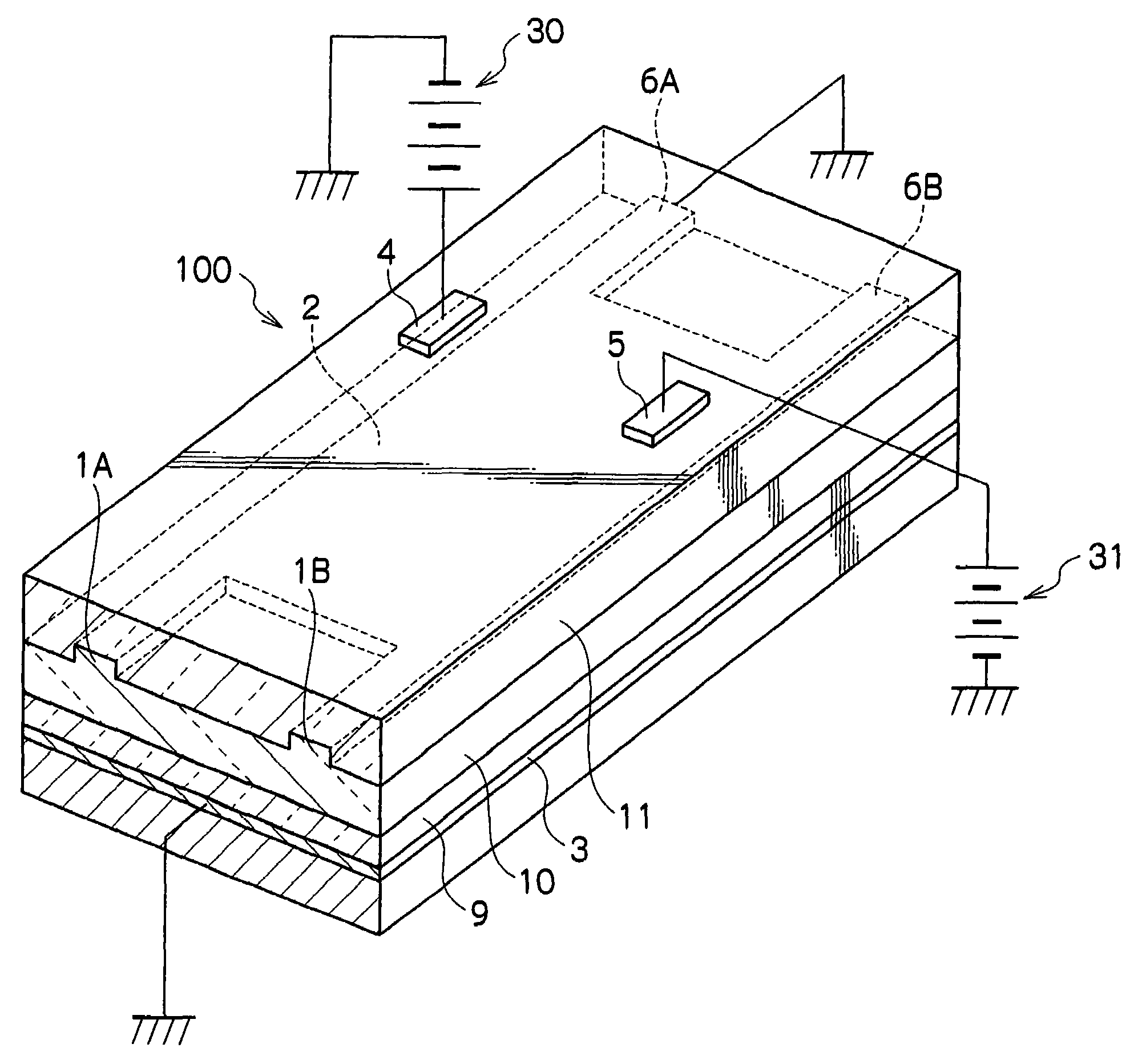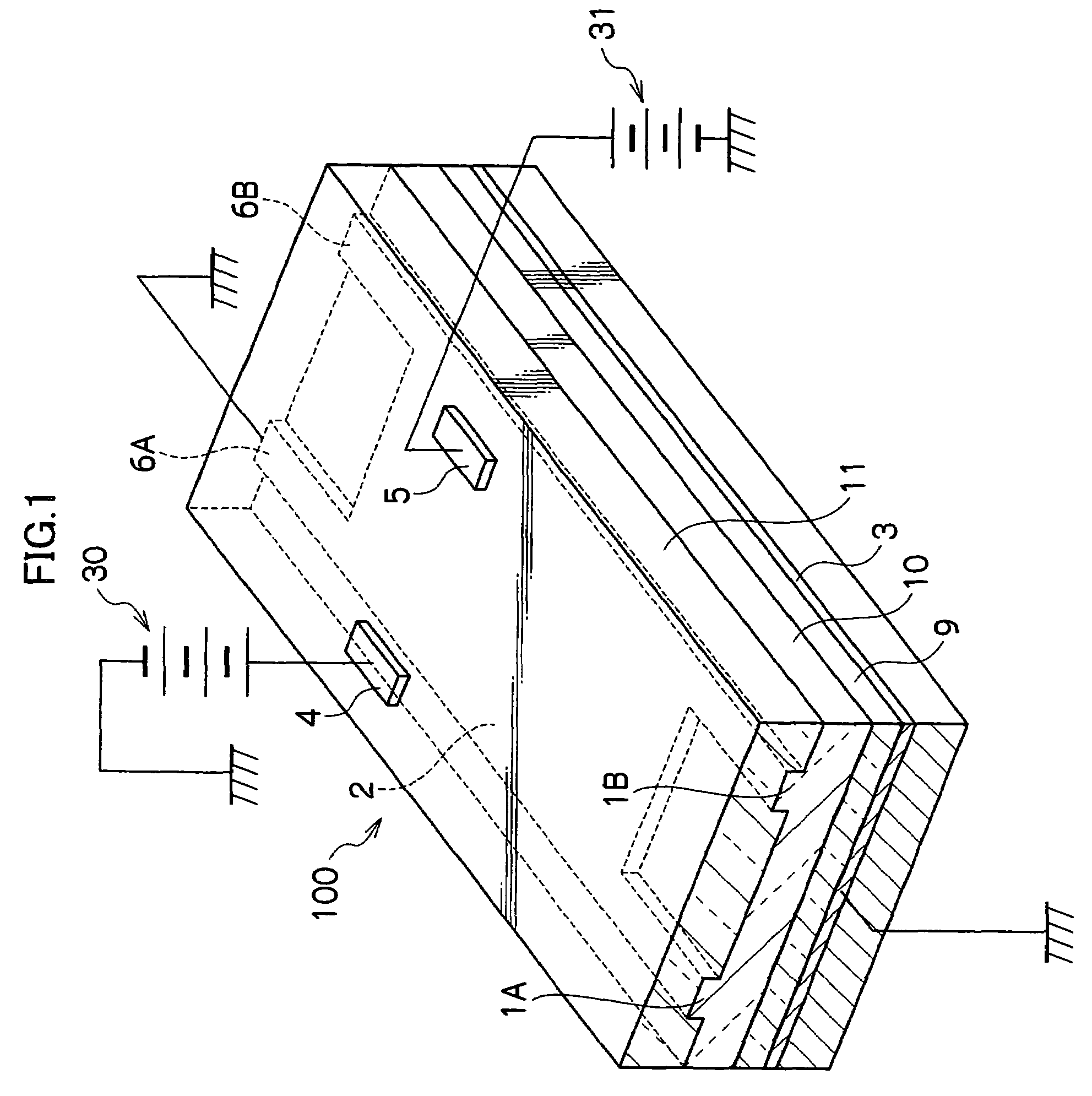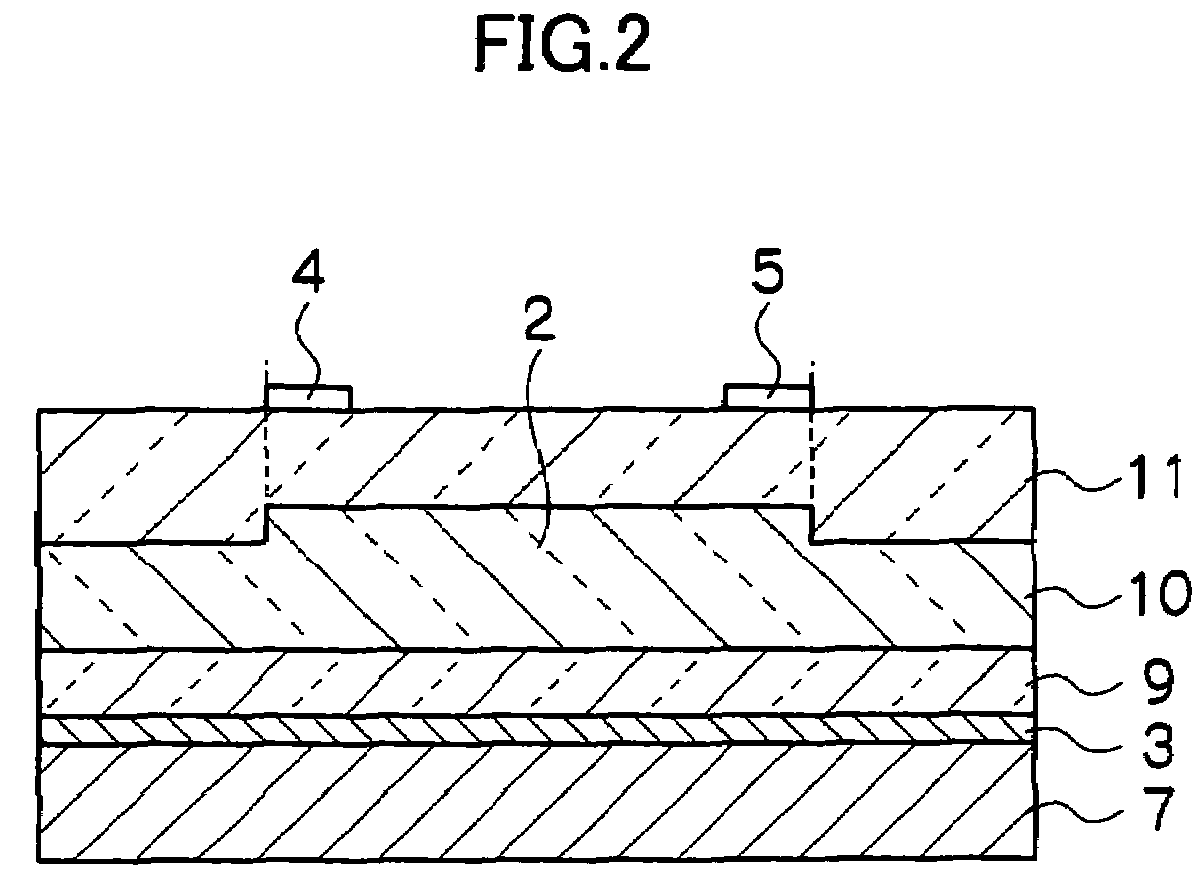Optical switching element
a technology of optical switching elements and switching elements, applied in the field of optical switching elements, can solve the problems of structural fragility of traditional optical switching elements
- Summary
- Abstract
- Description
- Claims
- Application Information
AI Technical Summary
Benefits of technology
Problems solved by technology
Method used
Image
Examples
embodiment
Optical Switching Element
(1) Configuration
[0038]As shown in FIGS. 1 to 5, an optical switching element 100 according to a first embodiment includes a rectangular multimode waveguide 2; two incident waveguides 1A and 1B (hereinafter collectively referred to sometimes as “incident waveguides 1”) connected to one end of the multimode waveguide 2; two outgoing waveguides 6A and 6B (hereinafter collectively referred to sometimes as “outgoing waveguides 6”) connected to the other end of the multimode waveguide 2; a first electrode 4 and a second electrode 5 arranged above the multimode waveguide 2; and a third electrode 3 arranged below the multimode waveguide 2. The incident waveguides 1A and 1B correspond to a first single mode waveguide in the present invention, and the outgoing waveguides 6A and 6B correspond to a second single mode waveguide in the present invention.
[0039]The incident waveguides 1, the outgoing waveguides 6, and the multimode waveguide 2 are integrally formed with a ...
example
[0079]The optical switching element 100 is formed according to the procedures shown in FIG. 19.
[0080]The third electrode 3 is formed by depositing gold on the substrate 7 through a VCD method. On the third electrode 3, an acrylic resin is spin coated and ultraviolet cured to form the lower cladding layer 9 with a thickness of 3.5 μm.
[0081]The resultant of dispersing Disperse-Red 1 or FTC (2-dicyanomethylene-3-cyano-4-{2-[trans-(4-N,N-diacetoxyethyl-amino)phenylene-3,4-dibutylene-5]vinyl}-5,5-dimethyl-2,5-dihydrofuran) in amorphous polycarbonate is spin coated onto the lower cladding layer 9, and then heating and curing are performed to form the core layer 10 with a thickness of 3.2 μm.
[0082]Subsequently, the incident waveguides 1A and 1B; the multimode waveguide 2; and the outgoing waveguides 6A and 6B are formed by etching the core layer. The width W1 of the incident waveguides 1 and the outgoing waveguides 6 is 5 μm, and the width W2 of the multimode waveguide 2 is 50 μm. Therefor...
PUM
| Property | Measurement | Unit |
|---|---|---|
| refractive index n1 | aaaaa | aaaaa |
| refractive index | aaaaa | aaaaa |
| voltage | aaaaa | aaaaa |
Abstract
Description
Claims
Application Information
 Login to View More
Login to View More - R&D
- Intellectual Property
- Life Sciences
- Materials
- Tech Scout
- Unparalleled Data Quality
- Higher Quality Content
- 60% Fewer Hallucinations
Browse by: Latest US Patents, China's latest patents, Technical Efficacy Thesaurus, Application Domain, Technology Topic, Popular Technical Reports.
© 2025 PatSnap. All rights reserved.Legal|Privacy policy|Modern Slavery Act Transparency Statement|Sitemap|About US| Contact US: help@patsnap.com



